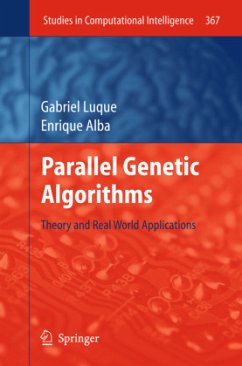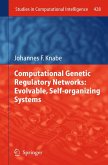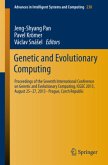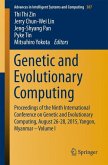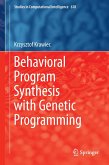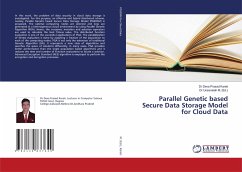This book is the result of several years of research trying to better characterize parallel genetic algorithms (pGAs) as a powerful tool for optimization, search, and learning. Readers can learn how to solve complex tasks by reducing their high computational times. Dealing with two scientific fields (parallelism and GAs) is always difficult, and the book seeks at gracefully introducing from basic concepts to advanced topics.
The presentation is structured in three parts. The first one is targeted to the algorithms themselves, discussing their components, the physical parallelism, and best practices in using and evaluating them. A second part deals with the theory for pGAs, with an eye on theory-to-practice issues. A final third part offers a very wide study of pGAs as practical problem solvers, addressing domains such as natural language processing, circuits design, scheduling, and genomics.
This volume will be helpful both for researchers andpractitioners. The first part shows pGAs to either beginners and mature researchers looking for a unified view of the two fields: GAs and parallelism. The second part partially solves (and also opens) new investigation lines in theory of pGAs. The third part can be accessed independently for readers interested in applications. The result is an excellent source of information on the state of the art and future developments in parallel GAs.
The presentation is structured in three parts. The first one is targeted to the algorithms themselves, discussing their components, the physical parallelism, and best practices in using and evaluating them. A second part deals with the theory for pGAs, with an eye on theory-to-practice issues. A final third part offers a very wide study of pGAs as practical problem solvers, addressing domains such as natural language processing, circuits design, scheduling, and genomics.
This volume will be helpful both for researchers andpractitioners. The first part shows pGAs to either beginners and mature researchers looking for a unified view of the two fields: GAs and parallelism. The second part partially solves (and also opens) new investigation lines in theory of pGAs. The third part can be accessed independently for readers interested in applications. The result is an excellent source of information on the state of the art and future developments in parallel GAs.
From the reviews:
"The book is clearly addressed at the practitioner in the field and at people interested in applying parallel evolutionary algorithms to some specific real world problem. ... For practitioners, the book offers four very concrete and precise case studies, an introduction to a library that facilitates implementation and a thorough and practical guide towards presenting their own results in scientific publications. The book extends well beyond a summary of the state of the art and contains a large amount of original research results." (Thomas Jansen, Zentralblatt MATH, Vol. 1232, 2012)
"The book is clearly addressed at the practitioner in the field and at people interested in applying parallel evolutionary algorithms to some specific real world problem. ... For practitioners, the book offers four very concrete and precise case studies, an introduction to a library that facilitates implementation and a thorough and practical guide towards presenting their own results in scientific publications. The book extends well beyond a summary of the state of the art and contains a large amount of original research results." (Thomas Jansen, Zentralblatt MATH, Vol. 1232, 2012)

